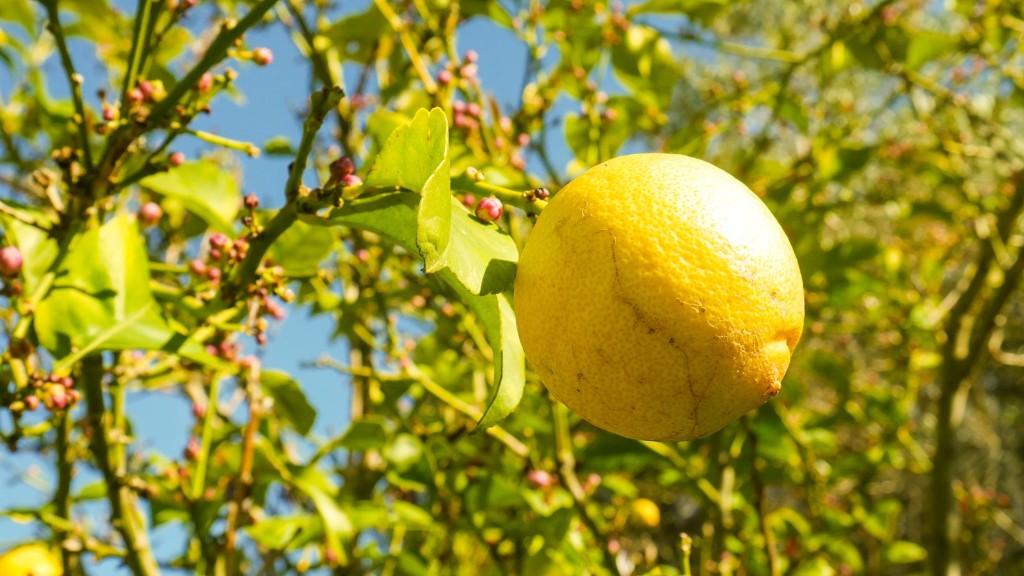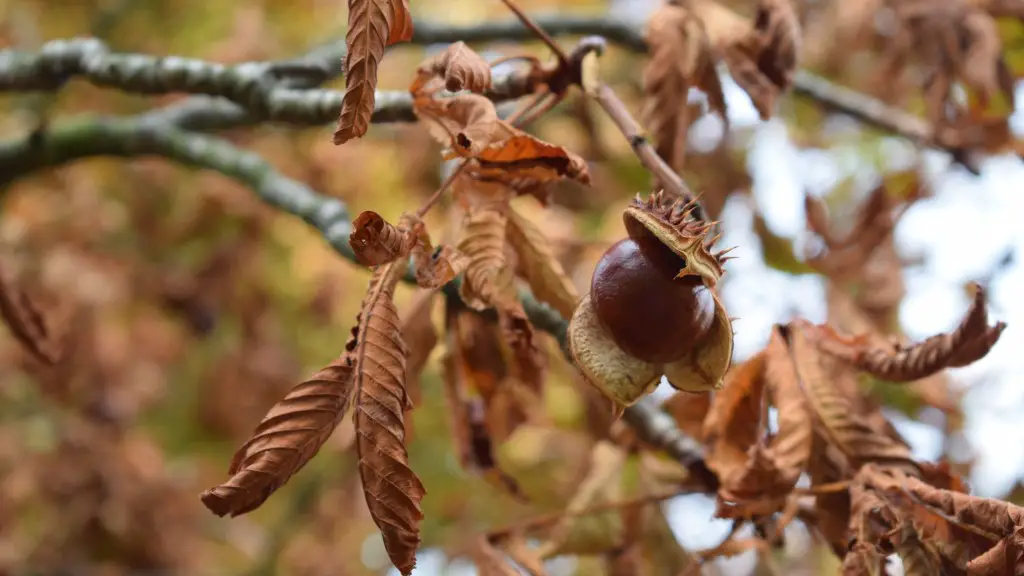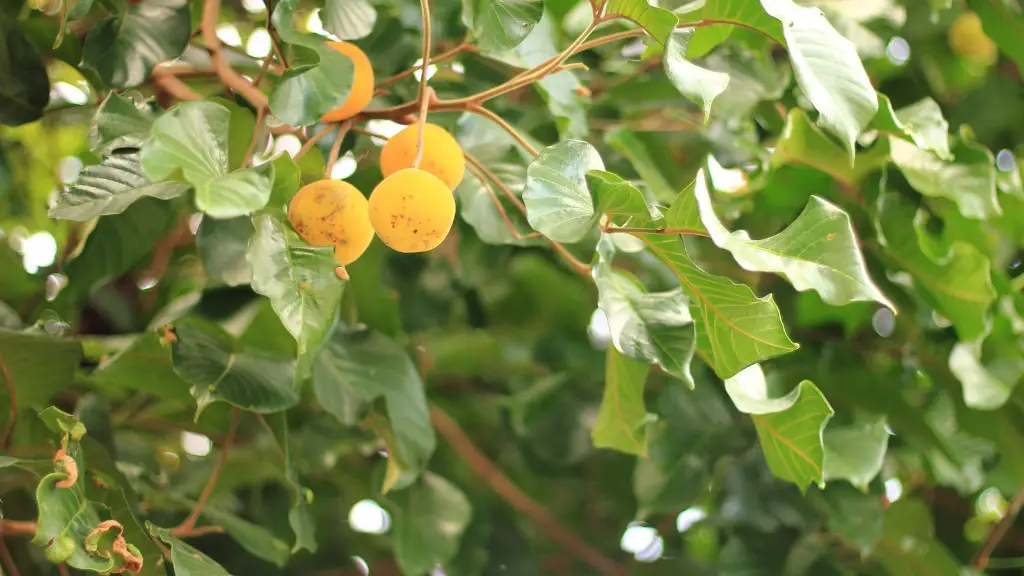An infestation of stink bugs on a lemon tree can be quite a nuisance. Fortunately, there are several ways to get rid of them. Here’s how to remove stink bugs from a lemon tree:
The first step is to identify the type of stink bugs, since some require different methods and materials for removal. Generally, most stink bugs can be identified by their brown color, segmented bodies, and distinct unpleasant odor when disturbed. Additionally, the lemon tree may have shiny spots, black spots, or a sticky residue on leaves, stems, and fruits, which indicate stink bug feeding.
The second step is to inspect the tree thoroughly and eliminate any hiding spots they may use, such as logs and rocks around the tree. This can reduce the chances of a re-infestation.
The third step is to use an environmentally friendly insecticide such as Neem oil or diatomaceous earth to kill the stink bugs directly. Be sure to apply the insecticide directly to the bugs and follow the instructions on the label. This can also help to prevent a re-infestation.
The fourth step is to use barrier methods such as organic pesticides and traps. These can be placed around the perimeter of the tree to repel the bugs, as well as around any other areas where they may enter. This can help to reduce the population quickly.
The fifth step is to create a habitat that is unfavorable to stink bugs. This can be done by keeping the area around the tree clean and removing any debris or fallen leaves. Additionally, keeping the tree well-watered may help to reduce the population.
The last step is to monitor the tree regularly. If the population is not reduced, then additional methods may be necessary to completely remove the stink bugs from the tree, such as applying additional insecticides. Regular monitoring is also essential to ensure that the stink bugs do not return.
Neem Oil for Stink Bug Control
Neem oil, a natural pesticide derived from the neem tree, can be used to treat infestations of stink bugs on lemon trees. The oil has insecticidal, fungicidal, and even anti-inflammatory properties, making it an effective treatment for bugs, fungal infections, and other plant diseases. Neem oil can be applied in the same way as other insecticides, either by spraying directly on the bugs or by applying it to the trunk or base of the tree. It is important to follow the recommended application rate as indicated on the packaging, as too much can harm the tree or cause its leaves to burn.
Neem oil is also effective at repelling stink bugs, as the active ingredient in the oil is known to cause a repulsive reaction in some bugs. This can be used to create a barrier around the tree, or it can be placed in strategic areas around the tree where the bugs like to enter. It is important to note that neem oil will only repel the bugs and will not actually eliminate them.
Neem oil is an environmentally friendly option for stink bug control, as it is biodegradable and breaks down quickly in the environment. It is also non-toxic to humans and other species of animals and is safe to use in gardens and other outdoor areas. As with any pesticide, it is important to observe the safety precautions as indicated on the product packaging.
Diatomaceous Earth for Stink Bug Control
Diatomaceous earth, an organic powder made from the fossilized remains of microscopic organisms, can be used to successfully control stink bugs in lemon trees. The powder works by desiccating the bug’s body and can be used as a form of barrier to keep stink bugs away from the tree. It is especially effective against soft bodied insects, such as aphids and whiteflies, as well as stink bugs.
Diatomaceous earth can be applied directly to the tree or placed around the perimeter of the tree to create an effective barrier. It is important to follow the application instructions as indicated on the product label, as too much can damage the tree. Additionally, the powder should be reapplied regularly, as it will break down quickly in the rain or when exposed to sun. It is also important to note that diatomaceous earth will only repel the stink bugs and will not eliminate them.
Diatomaceous earth offers an effective solution for controlling the population of stink bugs on lemon trees, as it is non-toxic, safe to use, and easy to find. It is also an environmentally friendly option, as it is biodegradable and breaks down quickly in the environment.
Traps for Stink Bug Control
Traps are a good way to reduce the population of stink bugs on a lemon tree. There are various types of traps available, such as sticky glue boards and trap crops. Sticky glue boards can be placed around the perimeter of the tree and are designed to attract and trap the bugs when they come in contact with the adhesive. Trap crops, or plants that the bugs are naturally attracted to, can also be used around the perimeter of the tree to attract the bugs, who can then be removed manually.
Traps are an effective way to control the population of stink bugs, as they can help to reduce the number of bugs quickly and effectively. They are also relatively inexpensive and easy to use. It is important to note, however, that the traps will only reduce the population of the bugs and not completely eliminate them.
Traps are a safe and effective solution for controlling stink bugs in lemon trees, as they are non-toxic and pose no harm to other species of animals or plants. Additionally, they are an environmentally friendly option, as they are biodegradable and pose no threat to the environment.
Physical Removal of Stink Bugs
Manual removal is another option for removing stink bugs from a lemon tree. This can be done by hand or with a shop vac, depending on the size of the infestation. When removing the bugs manually, it is important to wear gloves and other protective gear, as the bugs may release an unpleasant odor when disturbed. Be sure to remove all of the bugs and to inspect the tree thoroughly to ensure that there are no more left.
Once the bugs have been removed, it is important to clean the tree and the surrounding area thoroughly to remove any leftover residue or debris. This can help to prevent a re-infestation. Additionally, it is important to monitor the tree regularly to ensure that the population does not return.
Manual removal is an effective way to remove stink bugs from lemon trees, as it eliminates the need to use any toxic chemicals or pesticides. However, it is important to be thorough in the removal process, as re-infestations can occur very quickly. Regular monitoring is also necessary to ensure that the stink bugs do not return.
Insecticides for Stink Bug Control
Insecticides are a common method for controlling infestations of stink bugs in lemon trees. These chemical applications can be used to kill the bugs directly or to create a repulsive effect that will keep the bugs away from the tree. Common insecticides that can be used include Pyrethrin, Carbaryl, and Spinosad. When using insecticides, it is important to follow the application instructions as indicated on the product label, as too much can harm the tree. It is also important to note that most insecticides are toxic to humans and other species of animals, so it is best to use other methods of control first, if possible.
Insecticides can be an effective tool for reducing the population of stink bugs on lemon trees, as they can quickly kill the bugs. However, it is important to use them with caution, as they can be toxic to humans and other species of animals. Additionally, they may not be effective at preventing re-infestations, so they should be used in combination with other methods of control.
The use of insecticides can be an effective solution for controlling the population of stink bugs on a lemon tree. They can be used to quickly kill the bugs, as well as to create a barrier that will repel them. However, it is important to follow application instructions as indicated on the packaging, as too much can harm the tree and the environment.




